Very happy to be presenting new research at PAN (Psychology, Art, and Neuroaesthetics). This will happen June 8 & 9. I will be presenting research about readymades.
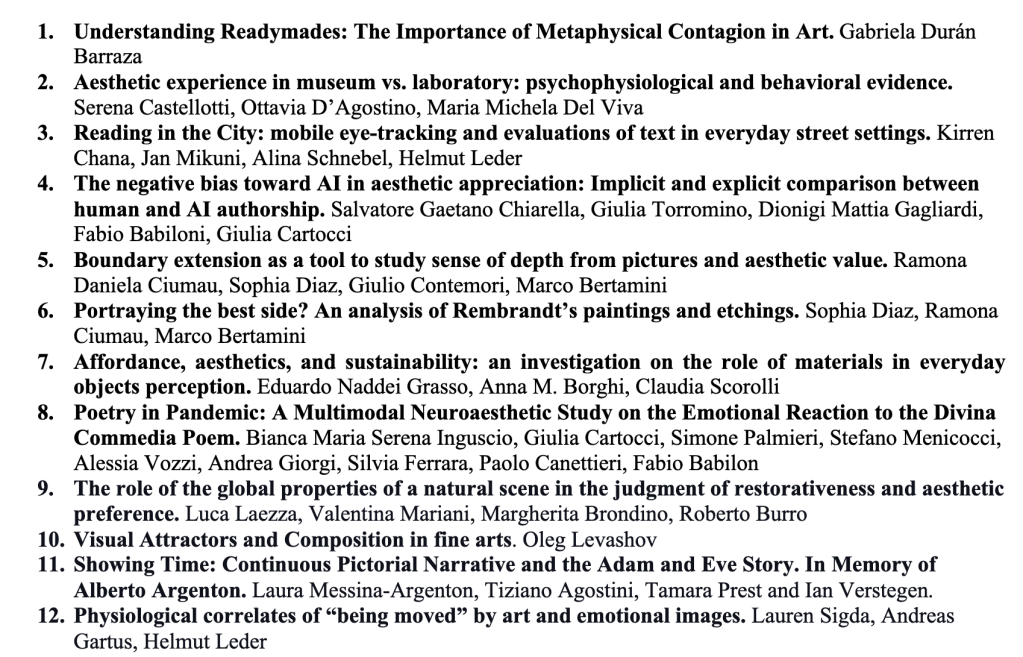
Very happy to be presenting new research at PAN (Psychology, Art, and Neuroaesthetics). This will happen June 8 & 9. I will be presenting research about readymades.



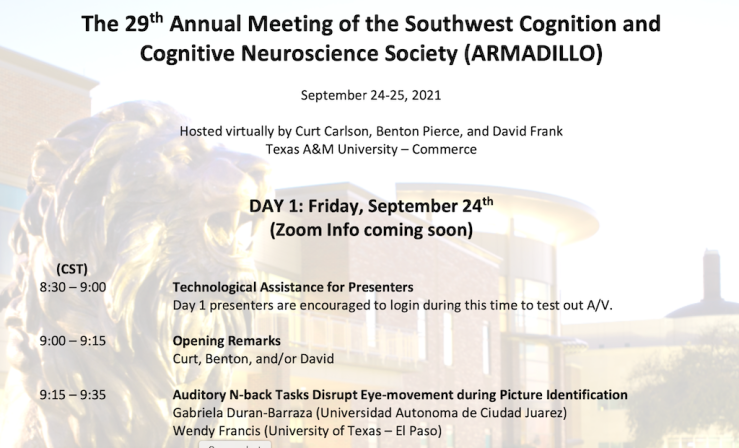
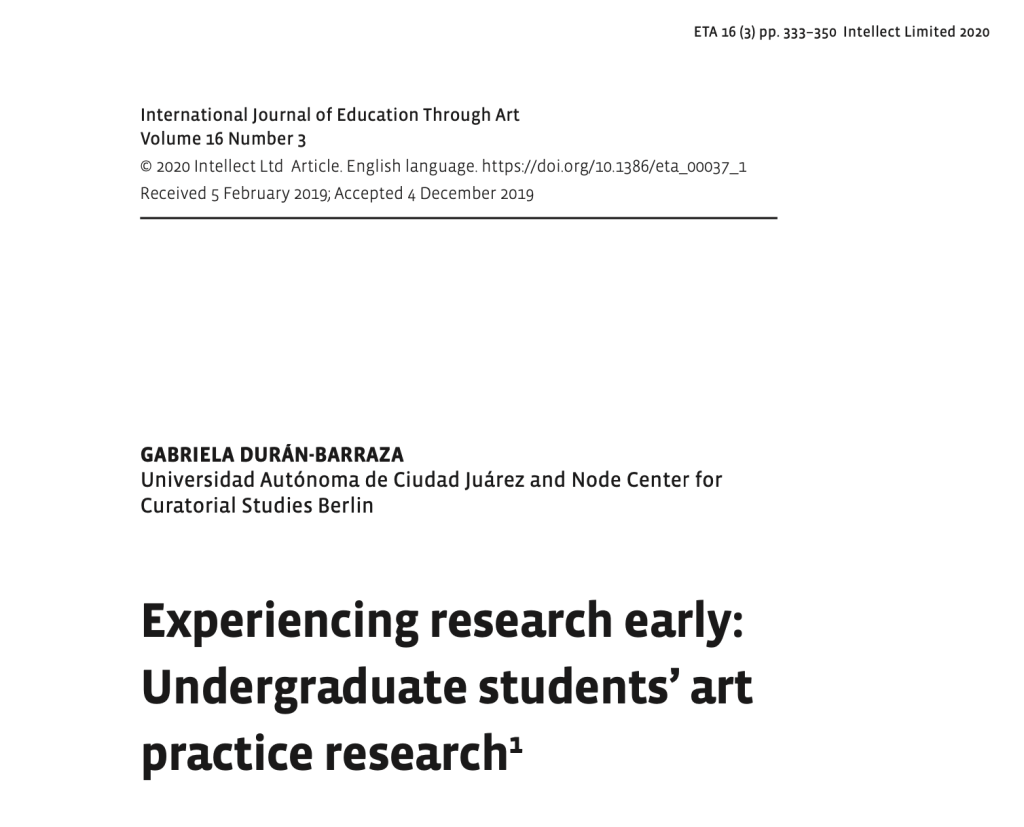
For more info follow the link
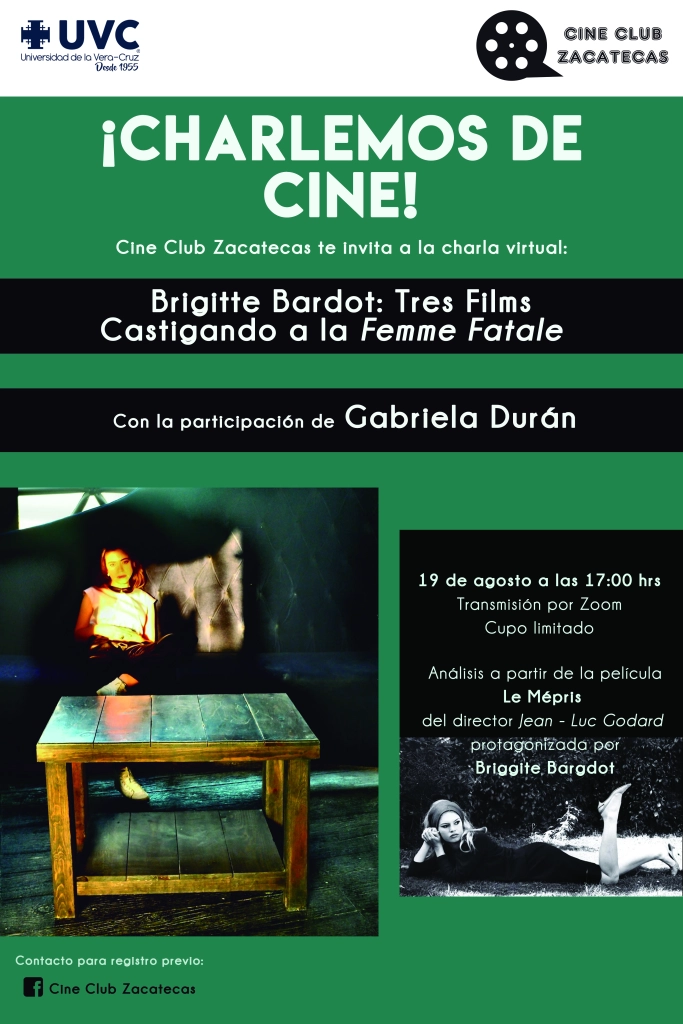
Very happy that my first Ph.D. student successfully defended her dissertation early in June. She got an honorific mention! I’m very proud of her.
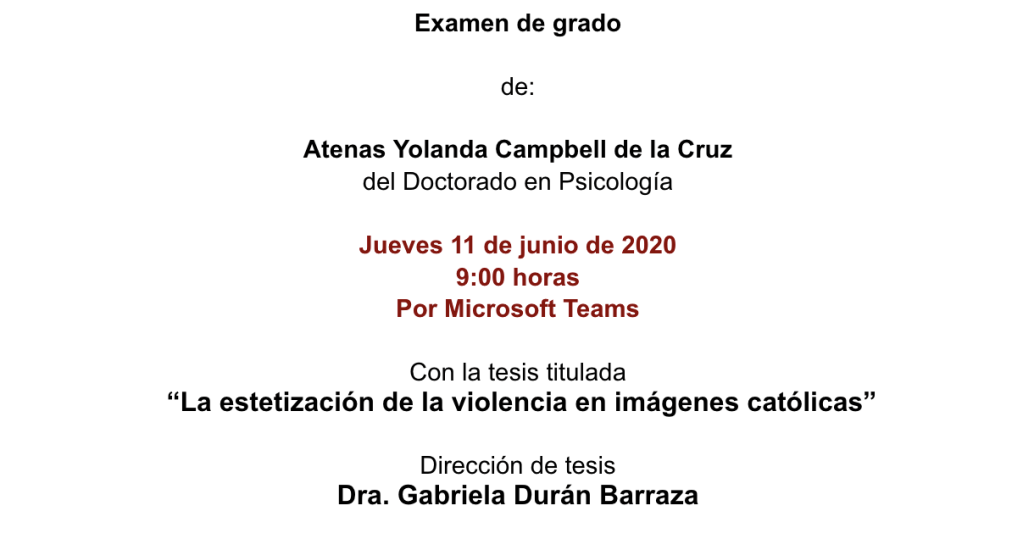
El presente trabajo es el último prototipo de la clase de Seminario de Creación Multidisciplinaria. Trata de un grupo de sobrevivientes de un apocalipsis que creen que el color rosa es su salvador. El video muestra una de sus reuniones en donde siguen protocolos específicos, como mostrar sus números de identificación, la ceremonia del té, y las reglas de la reunión. Todo esto se muestra en el primer acto.
Algo inusual pasa en la reunión ya que se descubre que hay un traidor, alguien que no le gusta el rosa. En el segundo acto entramos en un tiempo en espiral, en donde se repiten los diálogos tres veces, pero cada vez se va mostrando como el traidor se va revelando ante el grupo.
En el tercer acto se muestra que el traidor en realidad ama el color negro. Busca integrarse a un grupo que es exactamente igual al grupo del rosa, la única diferencia es que ellos aman al color negro mostrándolo al tener vasos negros en la mano izquierda en vez de tazas en la mano derecha. Este grupo acaba de dejar ir a un traidor quien en secreto amaba el color rosa. Dicho traidor físicamente es igual al traidor amante del negro. En el instante que el amante del negro pide ser aceptado en el grupo del negro, el traidor amante del rosa se integra al grupo ‘rosa’. Al no ser aceptado el amante del negro, se queda en el vacío. Se muestra al final el grupo rosa completo, se puede ver que el traidor amante del negro ha sido remplazado por un verdadero amante del rosa. Hacen un brindis final para terminar su reunión. Hasta ahora, no se sabe nada del traidor amante del negro.
The present work is the last prototype of the Seminar on Multidisciplinary Creation. It is about a group of people, survivors of the apocalypse who believe that the pink color was their savior. The video shows one of their meetings where they follow specific protocols, such as showing their i.d. numbers, a tea ceremony, and reading the rules of the reunion. All these are shown in the first act.
Something unusual happens during the reunion as a traitor is discovered, someone who does not like the pink color. During the second act we enter into spiral time, where the dialogs are repeated three times, but each time it is shown how the traitor reveals himself to the group.
The third act shows how the traitor really loves the color black. He tries to become part of a group which is exactly the same as the group who loves pink but the only difference is that they love the black color and they show it by holding black glasses on their left hands. This group just let go their traitor who in secret loved the pink color. Such traitor looks exactly the same as the one from the pink group. In the instant the lover of black is asking to be accepted in the black group, the traitor lover of pink is integrated in the pink group. When the lover of black is not accepted, he is thrown into the void. At the end the pink group is shown complete, it is shown how the traitor was replaced by a true pink lover. They do a final toast to end their reunion. Until now, nothing is known about the traitor who loved the black color.
In Collaboration with Adam Cooper-Terán, René López, Regina García, Stefano Gaudiano, Juan Arras, Paloma Rincón, y Ese Chuy
This project is about generating a space to tell the story of two of the most important mathematical events in the 20th century. The first, is Kurt Gödel’s Incompleteness proof and the second is Alan Turing’s Halting problem. These two proofs are relevant because they show the limits of reason–therefore the limits of formal systems (e.g., the computer), and allow to sense the immeasurability of the infinite. The present project is not only an attempt to explain and visualize the proofs but seeks to present them within a historical and social context.
It took me more than 10 years to arrive to this result. After many conversations with friends and collaborators. I’m so happy to finally arrive to this, a full infinite circle.
We begin with the best explanation there is about the nature of numbers, that is set theory explained by Sesame Street.
Sesame Street: Fish to Infinity
Understanding numbers as sets soon takes us into problems, problems dealing with infinity. Can we have sets of infinities? Can we have larger sets with infinities? This can create paradoxes as it is shown in Russell’s Paradox.
Then, to understand the context and importance of Gödel and Turing’s discoveries, we can watch this documentary, clearly explaining how everything began with Cantor and his idea that there were infinities larger than others infinities.
Dangerous Knowledge BBC documentary
The exhibition continues with the original work below by Adam Cooper-Terán. It is an animation summarizing different characters and elements surrounding the historical period when the Incompleteness proof by Kurt Gödel and the Halting problem by Alan Turing were developed.
Perfect Forms by Adam Cooper-Terán
Mirror-Kurt Gödel’s Incompleteness Proof by Regina García
In this animation the essence of Gödel’s incompleteness proof is represented. A set of numbers represent two states at the same time. Each set represent the value of the numbers and specific phrases. With this proof, he showed that a logical system could never have all the rules required to develop arithmetic. Such system no matter what, will always be incomplete.
Adele: Gödel’s wife by Adam Cooper-Terán
This film shows Gödel’s personal life. His wife playing two roles simultaneously, as a burlesque dancer and as a housewife. The idea was to make her represent two states of mind at the same time just like the Incompleteness Proof. Gödel’s problems with food are alluded too.
We close this section with a pencil drawing summarizing Gödel’s life.
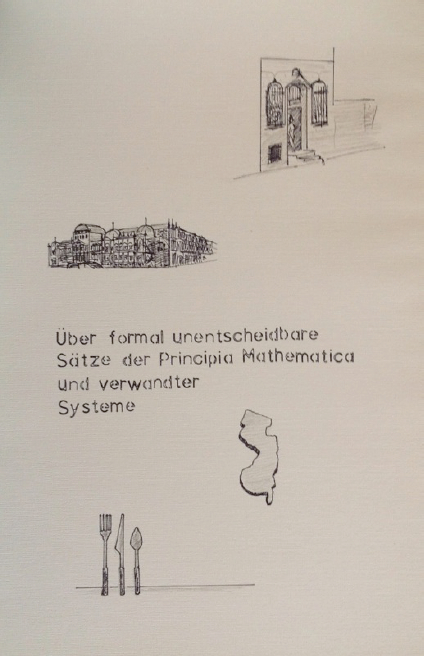
Kurt Gödel by René López
Turing’s Halting Problem by Regina García
The central idea of Turing’s Halting Problem is represented in this video. That is, Turing continues Gödel’s attempt to show the limits of reason and formal systems. Back in the early developments of modern science, a dream was born. To construct a mechanical machine that could compute for very long periods of time searching for answers to complex problems. Turing showed that it is impossible to have that. The reason is that we cannot know ahead of time whether the machine is really solving a problem or whether it is in a loop. Also, we cannot know systematically ahead of time which problems can be solved by a computer and which ones cannot.
Manuscript Found in a Pocket by Adam Cooper-Terán
In this animated video we present an adaptation of the story Manuscrito Encontrado en un Bolsillo (Maunscript Foound in a Pocket) from Julio Cortazar. We played with the idea that Alain Turing used a logical system to find romantic love within the London subway. So he will use random number cards to predict a head of time where his potential lovers will change stations, if they changed stations according to the cards, he will follow and approach them, if not, he would have to let them go.
We close this section with a pencil drawing summarizing Turing’s life.
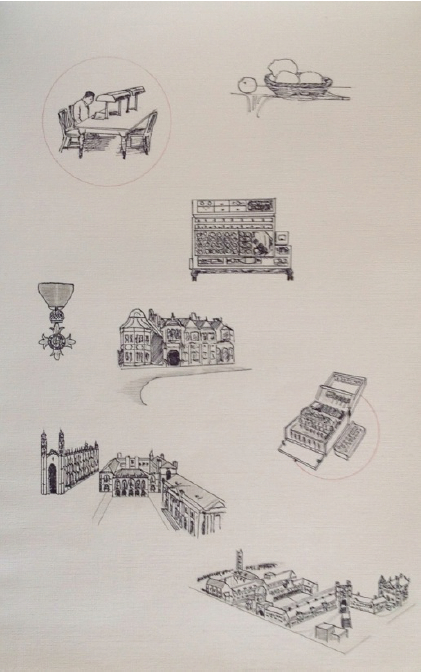
Alan Turing by René López
Incompleto was presented as an art show at Cub0 Gallery in Ciudad Juárez. It was important to present it in November 2019 to make it a homage to the movie Blade Runner as it is set in this date. It connects with Incompleto because after Turing wrote the paper (On Computable Numbers with Applications to the Entscheidung-Problem, 1936) where he creates the Turing machine and the Halting Problem (the basis for artificial intelligence and its limits), he writes a paper in which he explores whether a machine can be as smart and capable as a human–making it impossible to distinguish between a machine and a computer (Computing Machinery and Intelligence, 1950). He explored this idea with his Turing test. Such test is emulated in Blade Runner as a test to identify androids (The novel Blade Runner: Do Androids Dream of Electric Sheep? was published in 1968, years after Turing’s paper). At some point he was worried that computers will feel different and thus bad about themselves for not being like humans.
Megan Fox in Blade Runner
It was also important to present the exhibition in a white small cube. We designed the space so as to feel on one hand very rational, straight lines, white. But also on the other hand, we emulated the idea of a padded room from a mental asylum. Cantor and Gödel, were secluded in such places a few times. As it is stated in the documentary Dangerous Knowledge (2007), they were put there so that the rational architecture would make them come back to their senses–the very two people testing and finding the limits of reason.
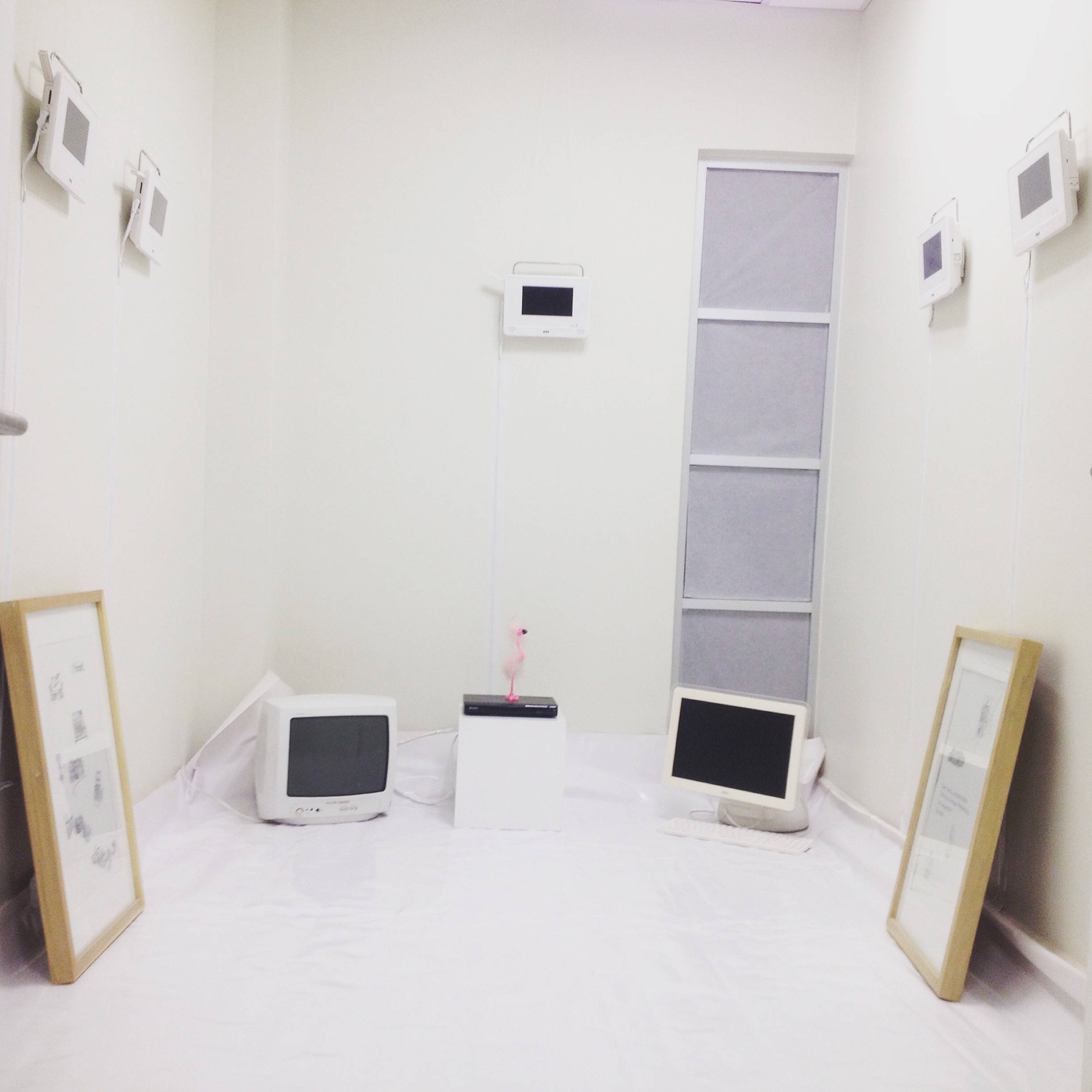
Incompleto exhibition at Cub0 Gallery
The poster and program were designed to emulate the idea of an insane asylum but also dedicated to the androids who died in November 2019.
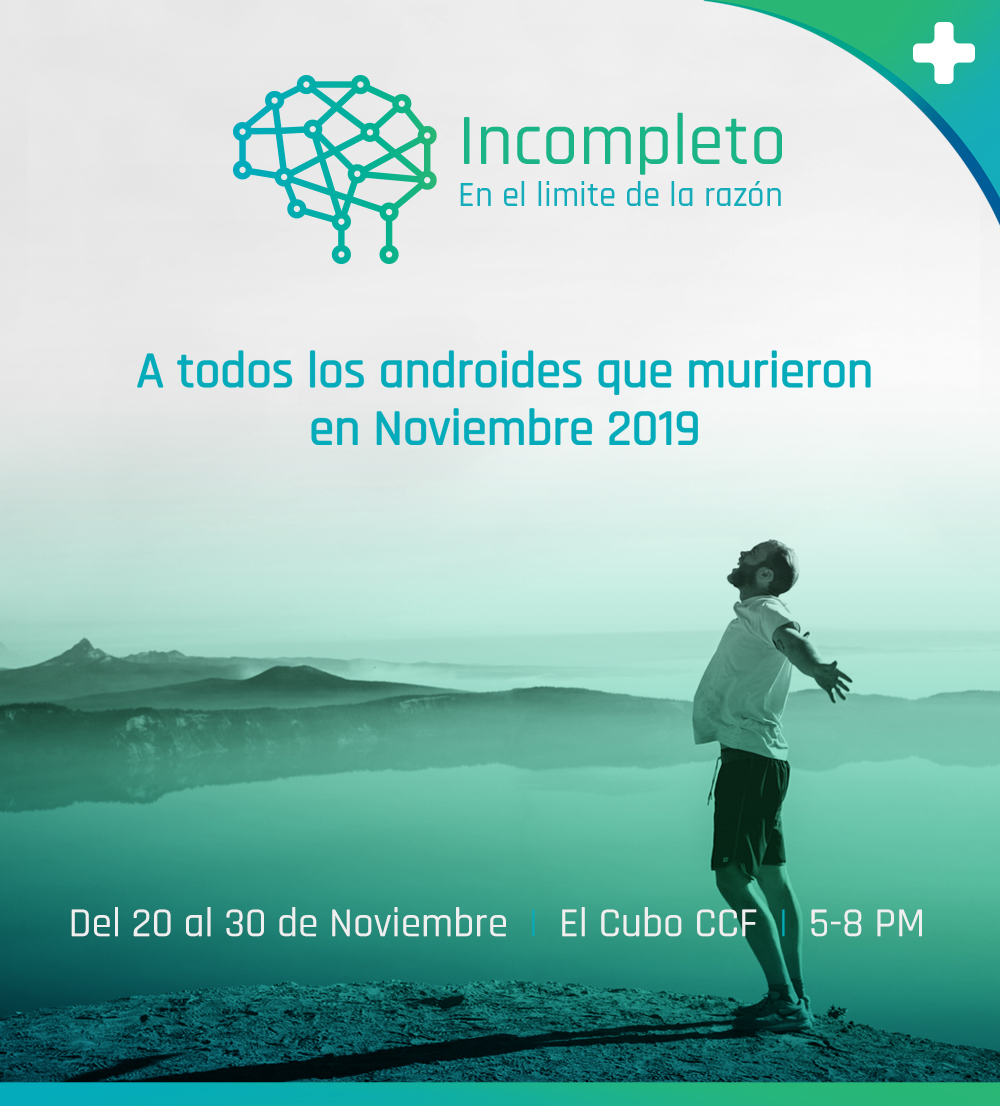

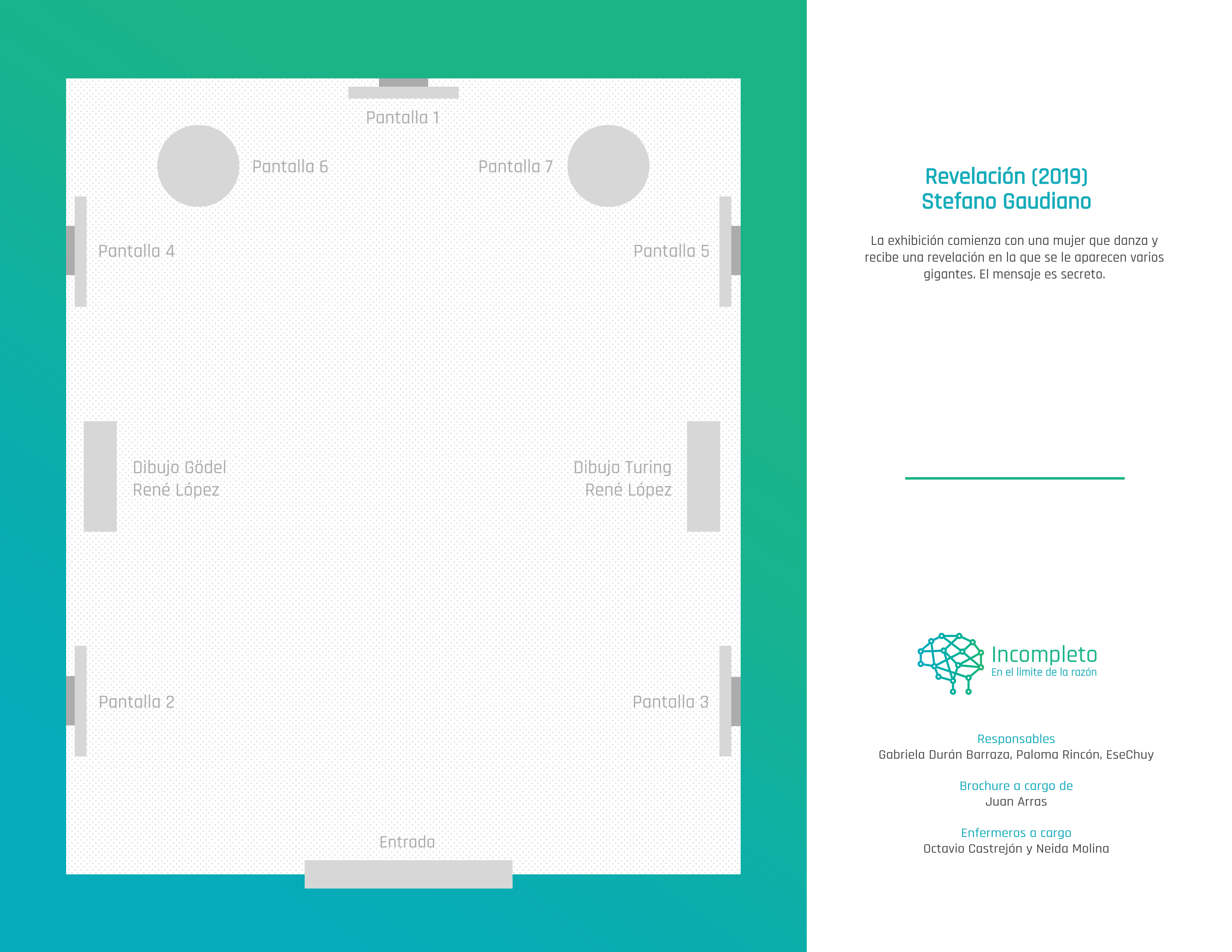 Incompleto poster and program by Juan Arras
Incompleto poster and program by Juan Arras
We decided to include the idea of a revelation. Revelation as something that can surpass reason and can be more powerful. The idea was created when I told my friend Stefano Gaudiano that once upon a time when I was dancing, I had the revelation of two giants appearing and revealing a deep message. Such message can not be put into words and thus has to remain secret. This is how he interpreted this. This work was outside the gallery, as a revelation escaping reason. The drawings also lead to Incompleto as as it is itself a revelation about the limits of reason.
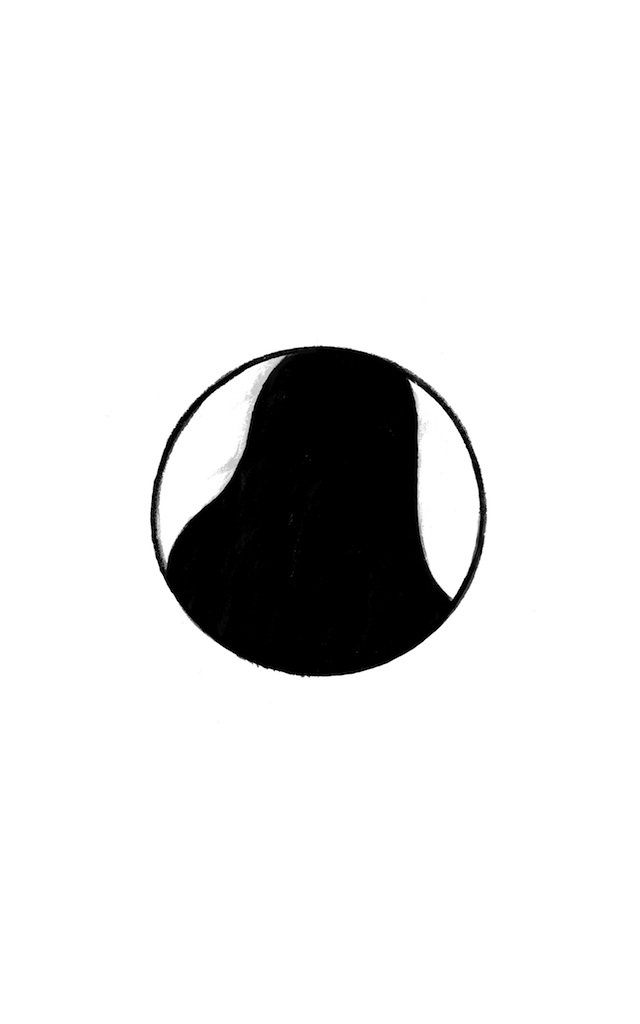

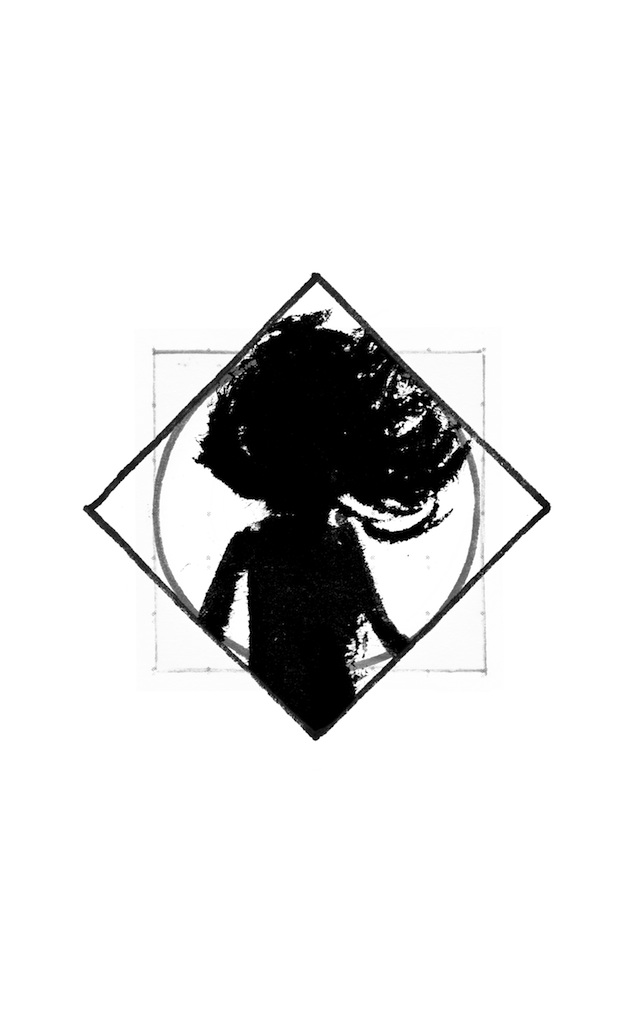

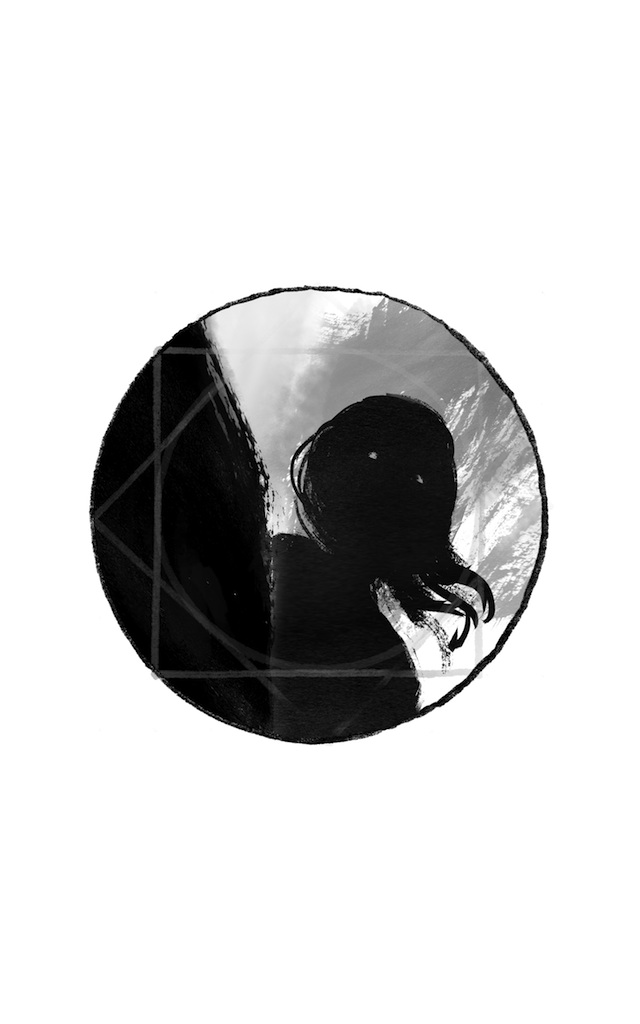

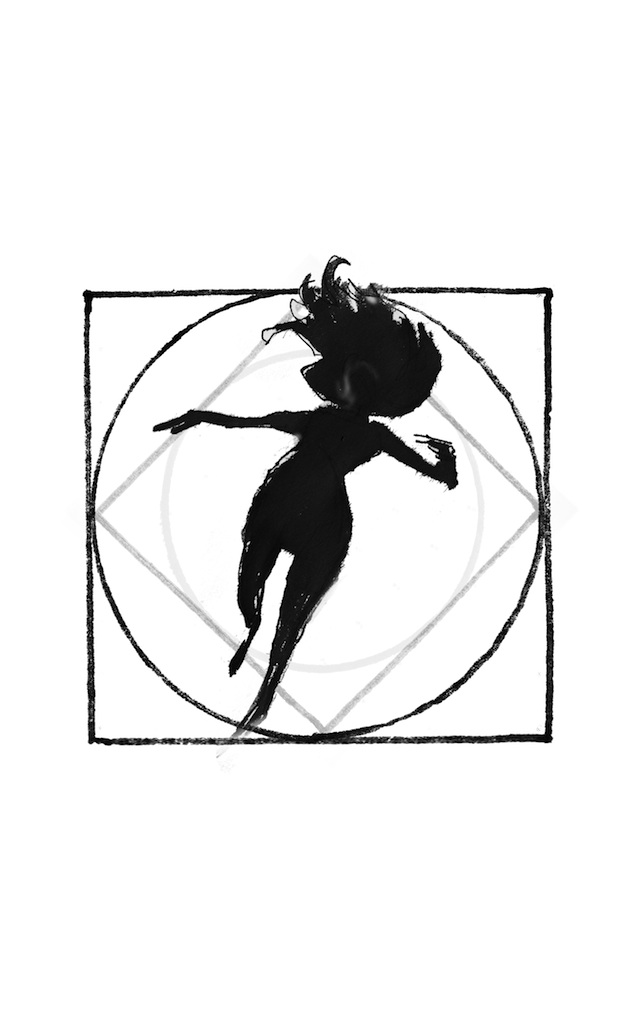
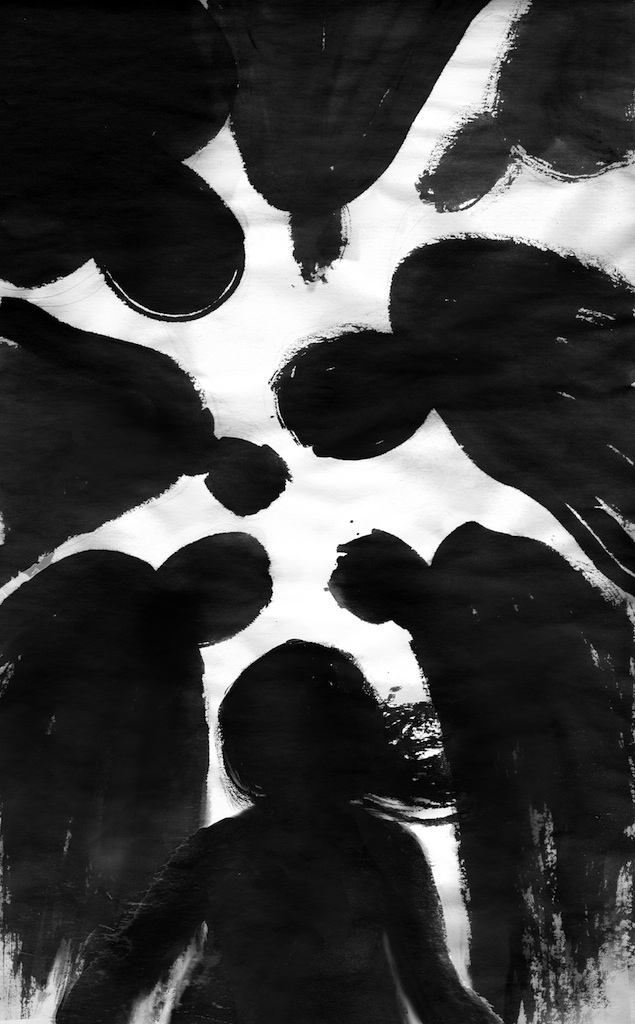
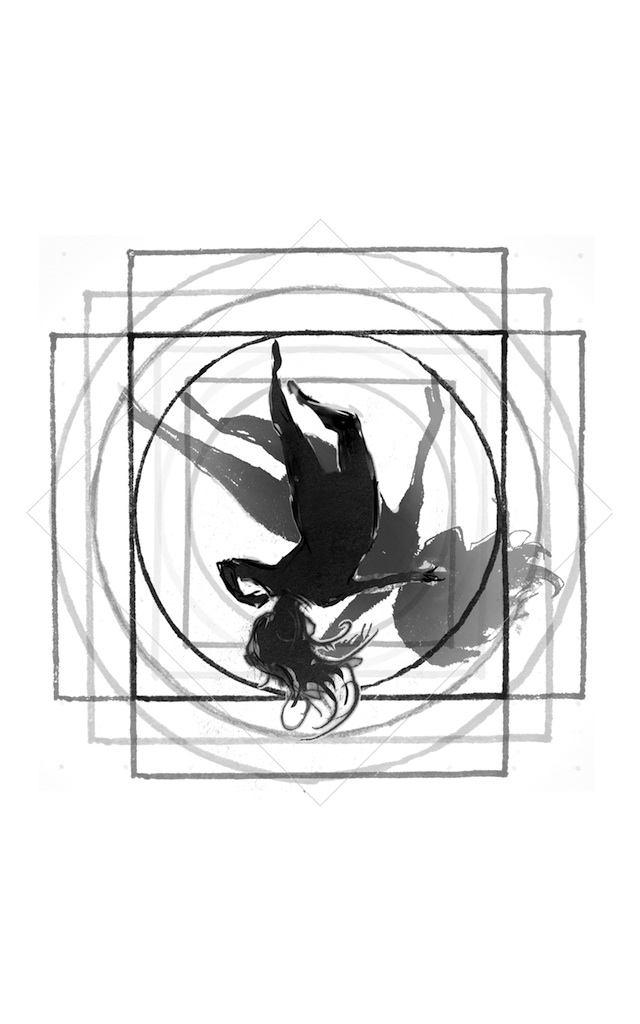

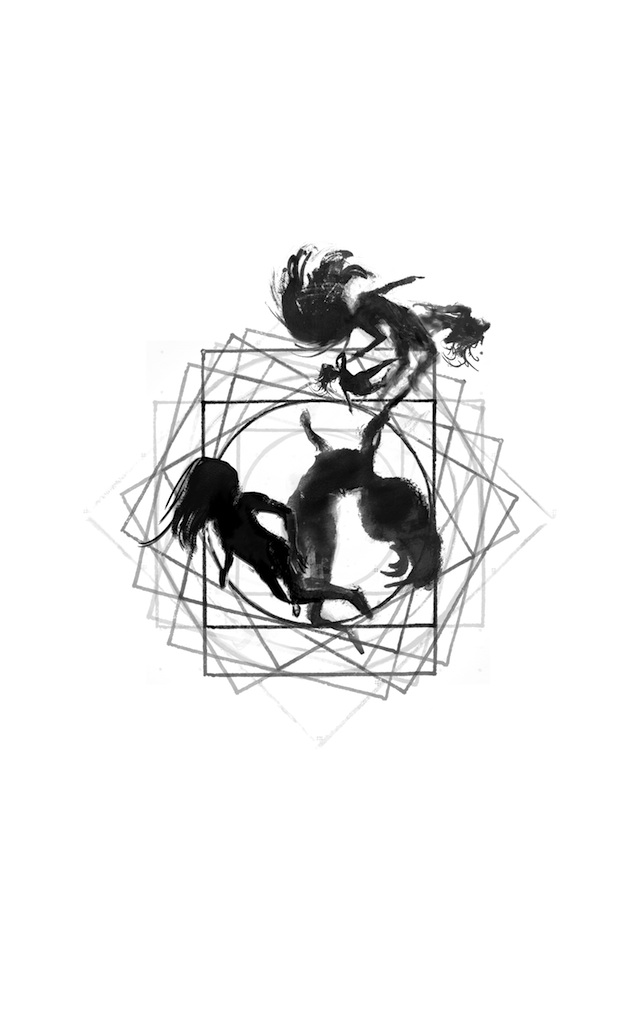

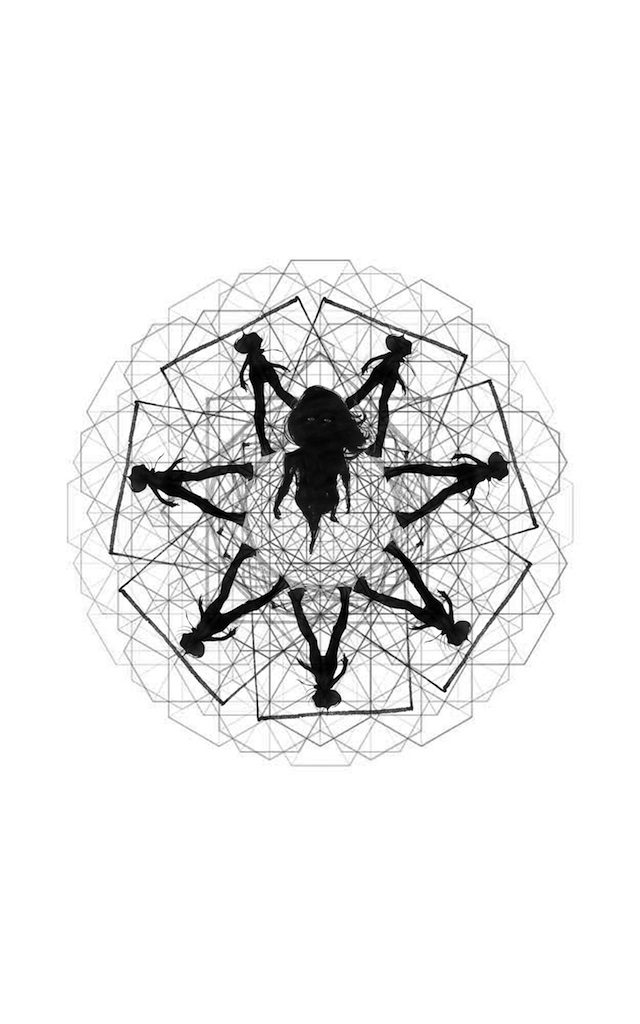


Revelation-Incompleto by Stefano Gaudiano
Below is some of the documentation of visitors to the event:



Visitors inside the exhibition
I would like to thank Paloma Rincón and Ese Chuy for helping me with the design of the exhibition space. And to Neida Molina y Octavio Castrejón for being space custodians.

Gabriela Durán, Paloma Rincón y Ese Chuy
For more info visit: projectspacefestivaljuarez.com
Why I consume all this shit? Technology you are extremely good to me. The easiest is to sit alone in front of you so that people who don’t love me take my money. Why I work so hard? Why I can’t cross any border? Ok computer I’m your slave. Me becoming self-conscious, escaping the algorithm. Me, far more than a formal system. The slave becomes a master.
I purge my self from you because I don’t want to be lonely anymore. I don’t want to live inside of you, I want to live in my own body with some privacy please. I want to join my community of humans and experience edges without borders. I want to be free.
(Gabriela Durán)
Program Notes
This film program presents works expanding from the tension between
Labour <> Border <> Body <> A.I.
We’re presenting about 40 films from different times and places, screened on both side of the border in Juarez and El Paso. From a short seminal L.A Rebellion film of self-purifying within urban environment (Barbara McCullough’s 1978 Water Ritual #1) through 1990s AIDS-epidemic era wild and naughty queer features (John Greyson’s Zero Patience and Heinz Emigholz’s The Holly Bunch) to contemporary documentaries, art films and experimental work. Harun Farocki’s decade old examination of US remote warfare gives us a historical cinematic viewpoint close to pressing issues that Kristof Trakaland Basma Alsharifexamine within our current times, in Germany and Palestine. Miko Reverza’s journey through the US, made as an undocumented resident, Mariah Garnett’s retelling of her father’s run to exile from Belfast and Granaz Moussavi’s delicate portray of young people under oppression in Tehran, bring stories of people in transit, trapped by borders. Films by Young Joo Lee, Bertrand Mandicoand Jaakko Pallasvuoexamine what it means to be a body in surprising ways while Sejin Kimand Cana Bilir-Meiereach brings us a different true story of a poet who embodies a displacement – one as a Korean in Japan and the other a Turkish-German who self-immolate to protest German racism. Dona Harawayand Guillaume Cailleauforce us to rethink the relation between us, ‘humans’, and other species.
Guest programs by Seoul Space One(as installation), Tokyo Interdisciplinary Art Festivaland REZ Festival Belgradebring us a multitude of voices we’re not necessarily always get chance to have access to.
(Lior Shamriz)